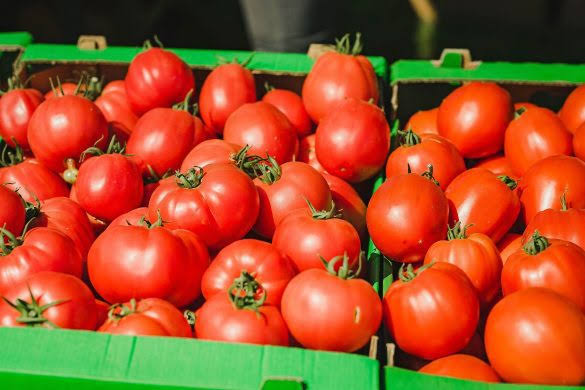India is struggling with a recover in food inflation, particularly in the vegetable sector, after a relatively calm period in the June 2023 quarter. Crisil, a well-known research agency, attributes this buildup trend to a point in vegetable and foodgrain prices, increased by an uncertain monsoon.
As per Business Standards report, the volatility in vegetable prices is primarily due to the significant weightage (15.5%) of vegetables in the food index, making them the most unstable component after cereals and milk. Tomatoes, onions, and potatoes, being main in Indian households, collectively constitute over a third of the CPI vegetables category.
Consequently, sharp fluctuations in their prices directly impact household budgets, elevate inflation expectations, and diminish purchasing power for non-essential items. India faced a similar situation in December 2019 when the Tomato-Onion-Potato (TOP) inflation soared to 132%, primarily due to extreme onion prices caused by unseasonal rains. In July 2023, TOP inflation pointed again to 52.6%, driven by tomato prices. The production growth of these essential vegetables especially decelerated, increasing the situation.
Several factors contribute to the volatility in vegetable prices. Production and prices are both highly volatile, influenced by adverse weather events, pest attacks, and demand-supply imbalances. Unlike cereals and pulses, vegetables lack price stabilization mechanisms, such as minimum support prices, leading to unpredictable pricing. Additionally, India’s vegetable yield per hectare remains significantly lower than global standards, contributing to supply shortages. Moreover, substantial losses occur at various stages, from harvesting to marketing, further straining the vegetable supply chain. Inefficiencies in sorting, grading, and processing lead to avoidable wastage. Low levels of food processing bother these losses, with only a fraction of produced vegetables being processed, in contrast to global practices.
The Indian government faces the challenge of addressing these issues to stabilize vegetable prices. Crisil suggests several strategies, including the adoption of hybrid varieties to enhance yields, promoting polyhouse cultivation for weather-resistant crops like tomatoes, and encouraging private sector investment in research and development for high-yielding and disease-resistant crop varieties. Access to cold storage facilities in vegetable-producing regions can reduce spoilage, while the use of plastic crates for transportation can reduce losses. Additionally, processing a portion of the produce into paste/puree can feed to demand during shortages.
The government’s Operation Greens initiative aims to stabilize vegetable supply by developing farmgate infrastructure and enhancing food processing capabilities, offering long-term solutions to the issue. India’s vegetable price unstable stems from production challenges, demand-supply imbalances, and inefficiencies in the supply chain. Addressing these issues through technology adoption, private sector investment, and government initiatives is crucial to stabilizing vegetable prices and ensuring food security for the nation.

